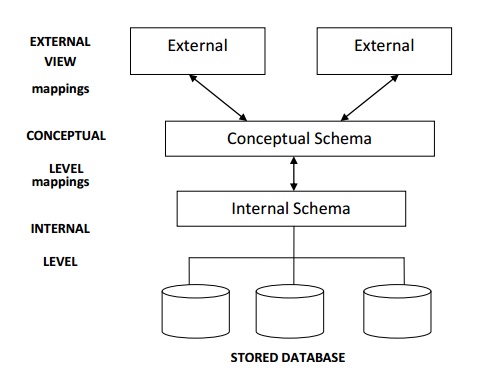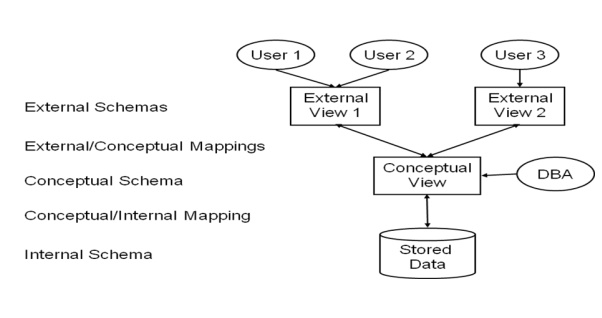Chapter: Database Management Systems : Introduction to DBMS
Data Models
Data Models:
A characteristic of the
database approach is that it provides a level of data abstraction, by hiding
details of data storage that are not needed by most users.
A data model is a
collection of concepts that can be used to describe the structure of a
database. The model provides the necessary means to achieve the abstraction.
The structure of a
database is characterized by data types, relationships, and constraints that
hold for the data. Models also include a set of operations for specifying
retrievals and updates.
Data models are
changing to include concepts to specify the behaviour of the database
application. This allows designers to specify a set of user defined operations
that are allowed.
Categories of Data Models
Data models can be categorized in multiple ways.
High level/conceptual data models –provide
concepts close to the way users perceive the data.
Physical data models –provide
concepts that describe the details of how data is stored in the computer.
These concepts are generally meant for the specialist, and not the end user.
Representational data models –provide
concepts that may be understood by the end user but not far removed from
the way data is organized.
Conceptual data models use concepts such
as entities, attributes and relationships.
Entity
–represents
a real world object or concept
Attribute -
represents property of interest that describes an entity, such as name or salary.
Relationships –among
two or more entities, represents an association among two or more
entities.
Representational data
models are used most frequently in commercial DBMSs. They
include relational data models, and legacy models such as network and
hierarchical models.
Physical data models describe
how data is stored in files by representing record formats, record orderings
and access paths.
Object data models –a
group of higher level implementation data models closer to conceptual data
models

Three Schema Architecture
The goal of the three
schema architecture is to separate the user applications and the physical
database. The schemas can be defined at the following levels:
1.
The internal level –has
an internal schema which describes the physical storage structure of the
database. Uses a physical data model and describes the complete details of data
storage and access paths for the database.
2.
The conceptual level –has
a conceptual schema which describes the structure of the database for
users. It hides the details of the physical storage structures, and
concentrates on describing entities, data types, relationships, user operations
and constraints. Usually a representational data model is used to describe the
conceptual schema.
3.
The External or View level –includes
external schemas or user vies. Each external schema describes the part
of the database that a particular user group is interested in and
hides the rest of the database from that user group.
Represented using the representational data model.
The three schema
architecture is used to visualize the schema levels in a database. The three
schemas are only descriptions of data, the data only actually exists is at the
physical level.
Internal Level:
• Deals with physical storage of data
Structure
of records on disk - files, pages, blocks
•
Indexes and ordering of records
•
Used by database system programmers
Internal Schema
RECORD
EMP
LENGTH=44
HEADER:
BYTE(5)
OFFSET=0NAME:
BYTE(25)
OFFSET=5
SALARY:
FULLWORD
OFFSET=30
DEPT:
BYTE(10)
OFFSET=34
.Conceptual Schema:
•
Deals with the organisation of the data
as a whole
•
Abstractions are used to remove
unnecessary details of the internal level
•
Used by DBAs and application programmers
•
Conceptual Schema
CREATE TABLE Employee (
Name VARCHAR(25), Salary
DOUBLE,
Dept_Name VARCHAR(10));
External Level:
•
Provides a view of the database tailored
to a user
•
Parts of the data may be hidden
•
Data is presented in a useful form
•
Used by end users and application
programmers
External Schemas Payroll:
String
Name
double
Salary
Personnel:
char
*Name
Mappings
•
Mappings translate information from one
level to the next
•
External/Conceptual
•
Conceptual/Internal
•
These mappings provide data independence
•
Physical data independence
•
Changes
to internal level
shouldn‟t aff
•
Logical data independence
•
Conceptual level
changesxternallevels
shouldn‟t affe
Data Model Architecture:

Related Topics